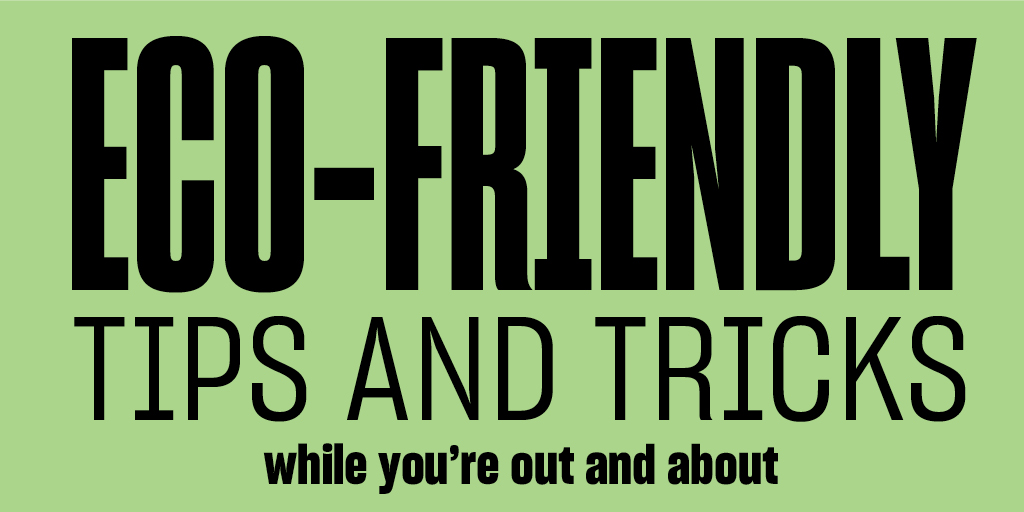Eco-friendly tips and tricks while you're out and about

Taking the initiative to renew, reuse, and recycle is a focal point of Canadian culture. There are steps businesses and customers can take to create an environmentally friendly society.
Sixty-seven per cent of Canadians drink coffee daily, and more than 50 per cent of 18 to 34 year olds buy their coffee at a coffee shop. Tea and alcohol are the next most popular beverages according to a report conducted by the Coffee Association of Canada in 2016.
Businesses are making it both environmentally, and economically friendly to reuse a cup for coffee, return a bottle, or even recycle worn and tattered clothing.
Fanshawe is an example of an institution that has taken a step in the right direction; using the water refi ll stations students can save a tooney on a bottle of water, as well as help save the environment.
Tim Horton's customers are charged for the cost of a refi ll when bringing in their own mug (which is 10 cents cheaper). This prong to protect the environment helps to reduce waste.
Starbucks has a similar practice and offers a 10 cent discount to guests who bring in their own mug.
David's Tea is another company following in the footsteps of encouraging reuse; using customer discounts as incentive, offering a 10 per cent rebates for refi lls using their reusable mugs. According to a blog post on David's Tea's website, buy a travel mug from David's Tea and they'll fill it free.
The Beer Store is another classic Canadian brand putting their green foot forward, recycling bottles and cans. Described as “walking the talk”, recovering an impressive 96 per cent of the standard bottle according to thebeerstore.ca/environment. The high success rate was achieved due to rebates offered to customers as cash incentives. When returning a glass bottle 630 millimetres or less, or a can one litre or less; you can expect a 10 cent rebate, anything larger is worth 20 cents.
The Beer Store has an environmentally friendly partnership with the LCBO through the recycling program “Bag it Back.” This program entails customers paying a refundable deposit added to the cost of the products at the LCBO. This deposit is then refunded at the Beer Store when goods are recycled. In addition to bottles and cans, The Beer Store also collects tetra or bag-inbox products and plastic bottles sold at the LCBO.
According to the second hand clothing store Value Village, 54 per cent of people report that they throw out used clothing instead of donating it; as a result, 26 billion pounds of clothes get thrown away each year. 85 per cent of all clothing ends up in land-fi ll!
Popular clothing retailer H&M is doing its part to reduce its environmental impact. According to H&M's corporate website, since 2013 they have accumulated more than 10,000 tonnes of clothing each year through their “Bring It On” campaign.
H&M has made it pay to recycle. Just show the cashier your clothes fi lled grocery bag and be rewarded with a $5 off coupon for your next purchase at H&M.
Following H&M's lead, Fanshawe's very own retail outlet Live Chic got on board.
Deborah Watson, the former store coach at Live Chic; which operates as retail and fashion merchandising's learning lab, explained.
“Last year we paired up with H&M for a, ‘Don't Let the Fashion Go to Waste' campaign. People would come into the store to drop off their used clothing and fabrics and they'd get a five dollar coupon [to be used at live chic]. We then would pass the clothing on to H&M and they would give us their five dollar coupon and we'd give them to our students.”
According to Watson they collected about 40 bags of clothing and diverted approximately 160 pounds of clothing from the landfill.
A few well- known companies are going the extra mile; offering environmentally friendly perks and rewards to customers encourages environmentally friendly practices and sets an example to others. Being conscientious and saving the environment can also translate into saving money














